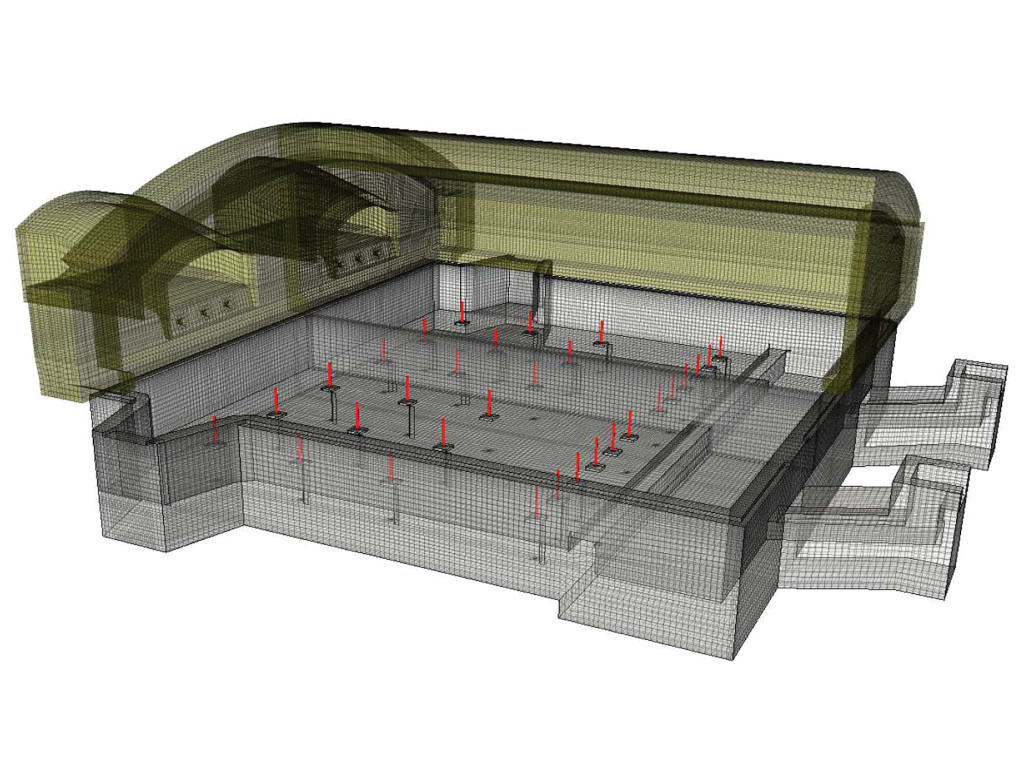The current market of container glass is characterised by ever smaller order volumes for specific assortments of bottles and jars, with ever shorter order lead times. Glass manufacturers all over the world are struggling with technology that does not allow them sufficient flexibility to efficiently produce what their clients order. Traditionally, producing two types of glass requires two furnaces or, in the case of a single furnace, time-consuming on-the-fly changes of composition that cause production losses. It is difficult – often impossible – to quickly implement changes in a production schedule involving different types of glasses whilst maintaining the highest possible melting efficiency in one furnace for as long as required.
Forglass engineers have come up with a solution that satisfies these challenging expectations. The Multi-glass Furnace is a brand-new patented furnace that can simultaneously produce smaller volumes of two or even several glasses with energy consumption comparable to melting only one glass in a standard, single-tank furnace pulling the same volume as the sum of glass extraction from the Multi-glass Furnace.
Two-tank multi-tasking
A furnace with two melting tanks and a common combustion chamber (one firing system), allows the manufacturer to melt two different glasses – varying in colour, chemical composition or using a different batch – simultaneously. For example, cheaper glass with less demanding performance parameters can be melted as the same time as a more expensive glass with better optical, chemical or mechanical properties.
Lower energy consumption per ton of glass reduces the emission of environmentally harmful compounds (CO2, NOx, SOx), and eliminates ‘reject glass’ that is unsellable due to its undesired properties or quality, but has to be produced when changing the glass composition in the furnace ‘on-the-fly’.
The Multi-glass Furnace designed by Forglass can help glass manufacturers meet the ‘zero emissions’ criterion by expanding the possibility of using more recycled cullet instead of raw materials that contain carbonates (soda, limestone, dolomite, barium carbonate) – a significant source of CO2 emissions. The Multi-glass Furnace can, for example, simultaneously melt extra white flint glass (for which external cullet cannot be used) in one tank and ecoflint glass (which by definition contains a very high proportion of recycled cullet) in the other. In this way, part of the ‘carbon footprint’ of the extra white flint glass can be ‘diluted’ by the ecoflint glass.
Flexible installation
Forglass designed the Multi-glass Furnace not only for greenfield investments, but what is even more important to glass producers – for modernisations in restricted spaces. In the latter situation, two basic variants are possible: conversion of two furnaces into one Multi-glass Furnace, or conversion of a single-tank furnace into the Multi-glass Furnace along with simultaneous enlargement. For many glass factories located in urban areas, this opens up new opportunities for expansion or restructuring of production capacities.
Through extensive mathematical modelling of its Multi-glass Furnace, Forglass proved that it is possible to depart from the conventions regarding the geometry of both U-flame and cross-flame furnaces, especially with regard to rules defining the recommended length-to-width ratio of the tank. The Multi-glass Furnace also makes it possible to use a double U-flame system.
Conversion of a single-tank furnace into the Multi-glass Furnace can be carried out by Forglass in any glass plant by expanding the furnace (adding a second tank) only in its width, not length. It is generally the only space available in the production hall and, crucially, the expansion of a U-fired furnace does not involve radical rebuilding of the regenerator, which makes the modification inexpensive and fast. The possibility of expanding the furnace without extending its length (which is normally necessary to maintain the geometry when simply enlarging a single-tank furnace) eliminates the costly and time-consuming reconstruction of the furnace hall and neighbouring buildings when further extension of length is no longer possible due to the location limitations found in many glassworks.
Cooling the inter-tank wall
Forglass has also solved the most important challenge of the Multi-glass Furnace – the structure and the method for cooling the inter-tank wall. Mathematical simulations proved that using electric boosting and bubbling systems, the glass melting process can be symmetrised in adjacent tanks when there are differences in the pull, different cullet proportions in the batch or different properties of batches and glasses, such as different melting energies, thermal conductivity coefficients or characteristics of viscosity changes as a function of temperature.
Image: An example of the Multi-glass Furnace dedicated to the simultaneous melting of amber and green glass.


